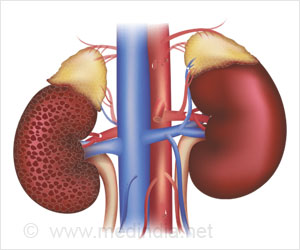The world's largest diabetes epidemic is threatening India, which is ill-equipped to cope, say experts. The amount of type II, or adult-onset
The world's largest diabetes epidemic is threatening India, which is ill-equipped to cope, say experts. The amount of type II, or adult-onset diabetes in Indian cities is high, and rising, suggests health data. India has a population of more than a billion, and its citizens appear prone to developing diabetes later in life, and are certainly more vulnerable to its complications such as high blood pressure leading to coronary heart disease.
Part of the blame falls on the adoption of a more Western lifestyle, involving fatty food and too little exercise. Obesity is a known risk factor for the development of diabetes. Dr Mohan, Medical Director of the MV Diabetes Research centre in Chennai, told the annual conference of the Association of Physicians of India: "By 2005, we will have 30 to 35 million diabetics in India, and every fifth diabetic in the world will be Indian."Epidemiological data shows that now only the prevalence of type II diabetes is very high in the urban population, but it is also increasing." Another worry confronting the Indian health authorities is the relatively young age at which diabetes is being diagnosed in many patients.
A study of complications in more than 3000 diabetics by the Diabetes Research Centre in Chennai showed that many had suffered eye, nerve or other tissue damage by the time diagnosis was made. More than a third of patients had high blood pressure, while 11.4% had developed coronary heart disease.
Despite this impending threat, the World Health Organisation recently listed the biggest threats to health in India as smoking and HIV. Other experts say that more efficient food production says that many Indians are at present better nourished than at any point in the last century.
Diabetes occurs when the body can no longer produce enough of the hormone insulin to properly regulate the levels of sugar in the bloodstream. Type I diabetes, often referred to as juvenile diabetes, happens when the cells in the pancreas which produce insulin are destroyed.
Patients require daily insulin injections, and a carefully controlled diet, for life. The more common variety, type II diabetes, generally happens later in life, and happens because the cells of the body become less responsive to the regulatory effects of insulin.
Advertisements











